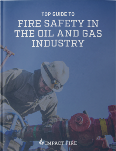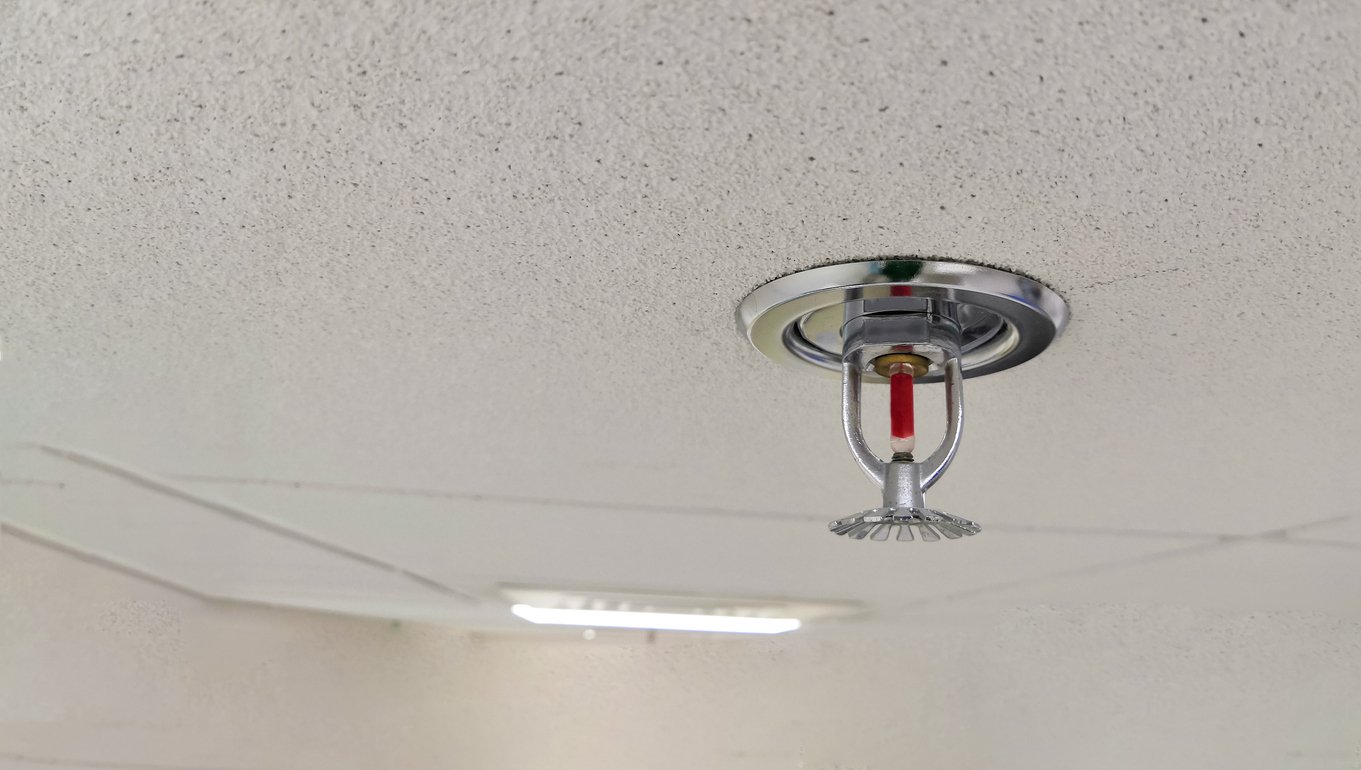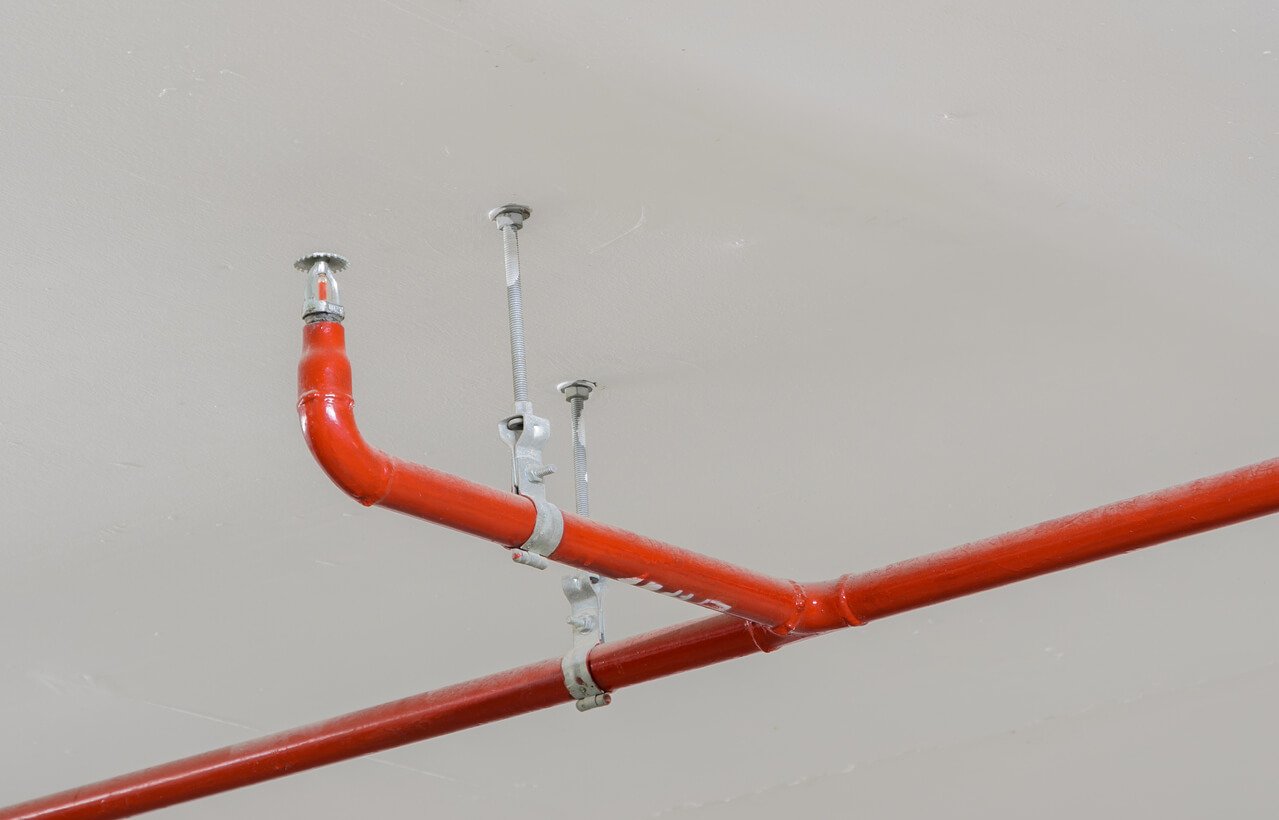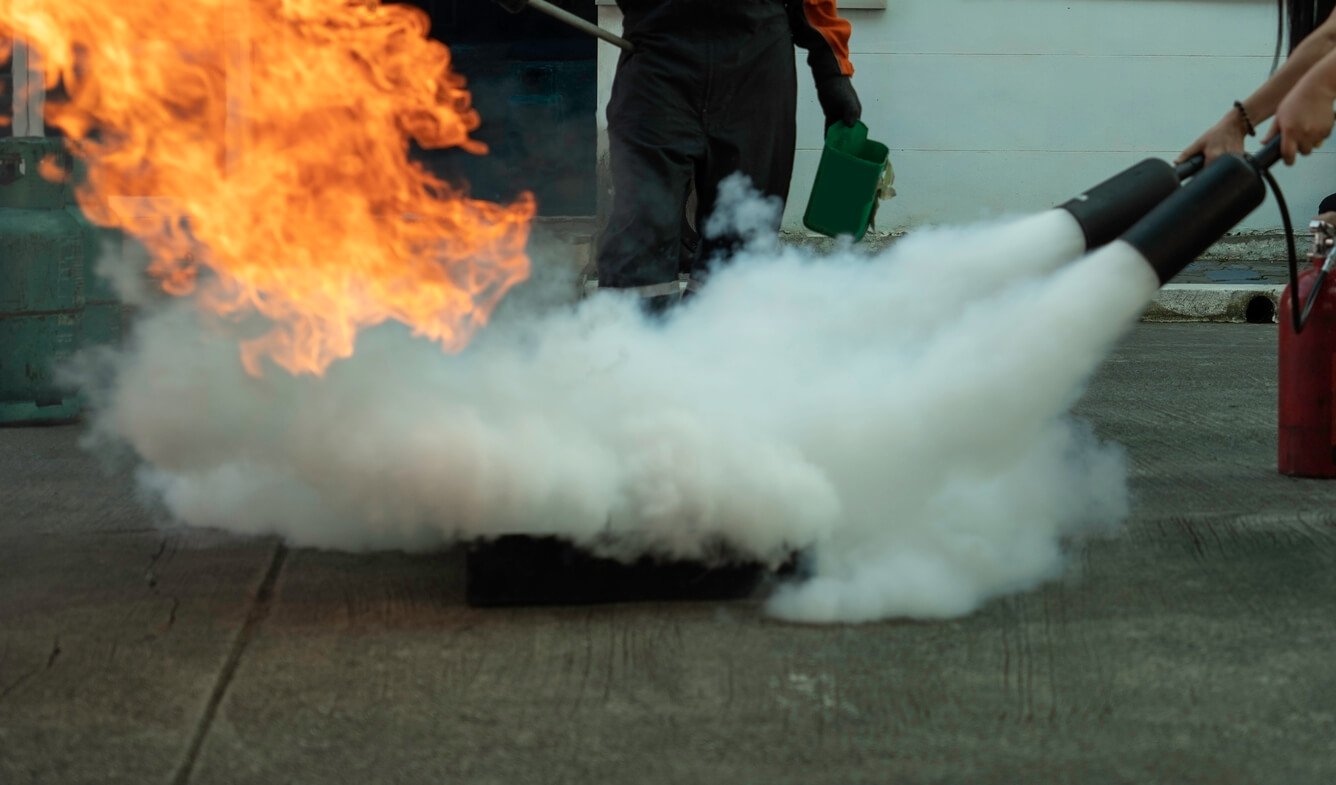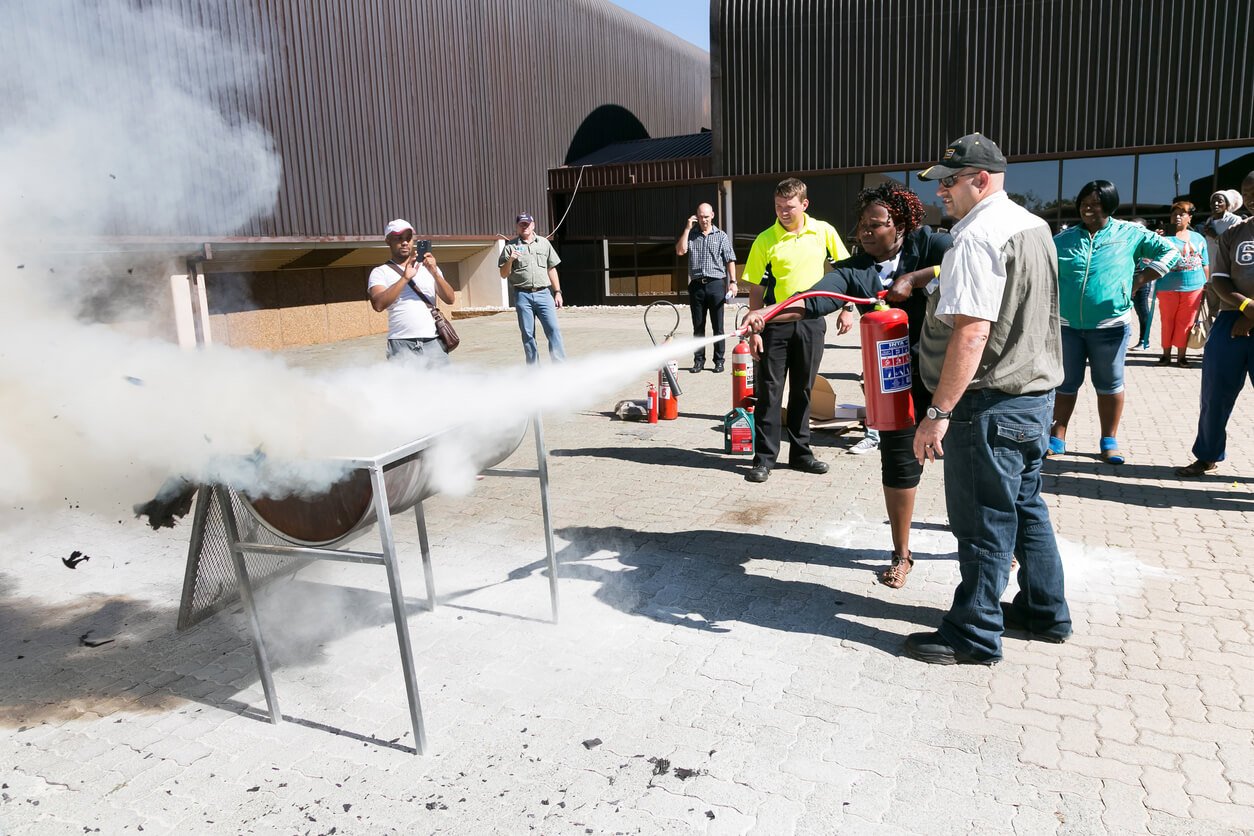How Automatic Sprinkler Systems Activate and Respond
Modern automatic sprinkler systems use heat-sensitive glass bulbs or fusible links that activate at specific temperatures (typically 135-165°F), not smoke detection.
Each sprinkler head operates independently, releasing water only where heat is detected. This targeted response controls fires effectively while minimizing water damage to unaffected areas.
Smart building owners understand that fire protection is a cornerstone of responsible property management.
Automatic sprinkler systems represent one of the most effective investments a business can make in protecting people and property.
It’s not hard to see why automatic sprinkler systems have become standard equipment in modern commercial buildings, providing building owners with confidence in their fire safety strategy while supporting business continuity and protecting valuable assets.
Key Takeaways
- Automatic sprinkler systems reduce property damage by up to 90%, making them one of the most effective fire protection investments available.
- Insurance premium discounts and cost recovery within 10 years demonstrate clear ROI.
- NFPA 13 requires sprinkler systems for most commercial buildings over 5,000 square feet, and compliant systems provide ongoing benefits, including simplified permitting and reduced liability exposure.
- Sprinkler systems minimize operational disruptions by controlling fires quickly, protecting revenue streams and allowing faster return to normal operations compared to unprotected buildings.
- Working with qualified fire protection professionals ensures proper system design, code compliance, and ongoing maintenance that maximizes system reliability and performance.
What Are Automatic Sprinkler Systems?
An automatic sprinkler system is an active fire protection method that detects heat from a fire and automatically discharges water to control or suppress flames.
Unlike manual firefighting methods, these systems operate independently, providing 24/7 protection for commercial buildings.
The system consists of a network of pipes filled with water under pressure, connected to strategically placed sprinkler heads throughout a building. Each sprinkler head operates individually, activating only when exposed to sufficient heat from a fire.
The effectiveness of automatic sprinkler systems lies in their design philosophy. Depending on the type of sprinkler, they are intended to either control the fire or suppress the fire.
Control mode sprinklers control the heat release rate of the fire to prevent building structure collapse, and pre-wet the surrounding combustibles to prevent fire spread. This targeted approach minimizes both fire damage and water damage, making automatic sprinkler systems one of the most efficient fire protection methods available.
There are four main types of automatic sprinkler systems, each designed for specific building conditions and protection requirements:
- Wet pipe systems
- Dry pipe systems
- Pre-action sprinklers
- Deluge systems
The selection of the appropriate system type depends on several factors, including ambient temperature conditions, the sensitivity of materials being protected, building occupancy, and specific fire hazards present.
Building owners should work with qualified fire protection professionals to determine which system type best meets their specific needs and local code requirements.
How Do They Work?
The fundamental operation of automatic sprinkler systems is elegantly simple yet remarkably effective.
Contrary to popular belief and movie portrayals, fire sprinklers are triggered by high heat, not smoke. As a fire ignites, the air above it heats quickly and spreads along the ceiling. An automatic sprinkler is typically activated when the temperature reaches within the range of 135-165 degrees Fahrenheit, saturating the fire below it.
Each sprinkler head contains a heat-sensitive element that acts as a trigger mechanism. Most modern sprinklers use one of two types of heat-sensitive elements: fusible links or glass bulbs.
Fusible link designs feature a metal alloy with a specific melting point, typically around 135°F to 170°F according to the National Fire Protection Association. When the air surrounding the fusible link reaches this temperature, the metal alloy melts, triggering the sprinkler head to release water.
More commonly used today are glass bulb sprinklers, which contain a small glass bulb filled with a glycerin-based liquid that expands when heated. The liquid inside the glass bulb expands as it heats up. When the temperature reaches the breaking point, the glass bulb shatters, causing the sprinkler head to open.
One of the most important aspects of sprinkler operation is that each sprinkler head operates independently. This means that only sprinkler heads exposed to sufficient heat activate, not the entire system, as often depicted in movies. This localized activation minimizes water damage while effectively controlling the fire at its source.
The Legal Reasons Your Building Needs Automatic Sprinkler Systems
Fire sprinkler requirements for commercial buildings are primarily governed by the NFPA 13 Standard for the Installation of Sprinkler Systems, which provides the foundation for most state and local building codes. Understanding these requirements is essential for building owners to ensure compliance and avoid costly retrofits.
Size and Occupancy Thresholds
These elements determine when sprinkler systems become mandatory. All new commercial structures with a fire area of more than 5,000 square feet must have automatic fire sprinkler systems installed.
Assembly occupancies like theaters and auditoriums typically require sprinklers if they exceed 12,000 square feet or have an occupant load of more than 300 people.
Building-Specific Requirements
These vary by occupancy type. Business occupancies often require sprinklers when over 12,000 square feet, while industrial facilities must install systems if they exceed 12,000 square feet or store hazardous materials.
High-rise buildings generally require comprehensive sprinkler protection regardless of size due to firefighting access challenges.
Design and Installation Standards
Under NFPA 13, systems must provide adequate water pressure and flow rates, with minimum design densities based on occupancy hazard classifications.
Sprinkler spacing cannot exceed maximum distances (typically 15 feet between heads), and coverage areas are limited to ensure effective fire control. The standard also mandates specific pipe sizing, hanger spacing, and hydraulic calculations to verify system performance.
Water Supply Requirements
You’ll also need to be mindful of provisions for reliable water sources, adequate storage capacity, and backup systems where needed. Buildings may require fire pumps when municipal water pressure is insufficient, and systems must include provisions for fire department connections to supplement the water supply during emergencies.
Ongoing Compliance requires adherence to NFPA 25 standards for inspection, testing, and maintenance. Regular compliance demonstrations protect building owners from liability while ensuring system reliability. Professional fire protection companies help ensure ongoing code compliance through scheduled inspections and maintenance programs that meet all regulatory requirements.
Benefits of Automatic Sprinkler Systems
The advantages of installing automatic sprinkler systems extend far beyond regulatory compliance, delivering measurable benefits that impact every aspect of building operations and ownership.
Life Safety Protection
This remains one of the most important benefits of automatic sprinkler systems. These systems are designed to control heat, smoke, and fire, providing additional time for occupants to escape safely.
Sprinkler systems can reduce property damage by as much as 90% by limiting fires to their area of origin, helping ensure that the rest of the building remains largely unscathed.
Business Continuity and Operational Protection
The disruptive effects of a fire can shut down operations for extended periods, jeopardizing business survival.
Sprinkler systems help maintain business continuity by mitigating fire intensity and spread, keeping operational disruptions to a minimum. A well-maintained sprinkler system can stop a fire from spreading, reduce its intensity, and may even extinguish it altogether, which is critical for keeping overall business losses low.
Financial Benefits
Sprinkler systems are a strong long-term investment.
Buildings with compliant sprinkler systems may qualify for reduced insurance premiums, with savings often justifying the initial cost and maintenance of the system. Insurance companies recognize the enhanced safety profile, offering decreased premium rates and broader coverage options.
In fact, thanks to that benefit and enhanced business continuity, sprinkler systems can recover their cost in around 10 years.
Property Value Enhancement
Having a high-quality sprinkler system can significantly increase property sale value, as prospective buyers recognize the time and money saved by having an up-to-date system already in place. Buildings with comprehensive safety measures are more attractive to tenants, customers, and stakeholders.
Rapid Response and Effectiveness
Commercial sprinkler systems spring into action automatically, making them one of the quickest and most effective ways to minimize fire risks.
These systems operate 24/7 without human intervention, ensuring protection even when buildings are unoccupied. The focused water application prevents unnecessary water damage to unaffected areas while providing effective fire suppression where needed.
Partner with Professional Fire Protection Experts For Your Building Sprinkler System
Automatic sprinkler systems represent one of the most effective investments building owners can make in protecting lives, property, and business operations.
Implementing an effective automatic sprinkler system requires expertise that goes beyond basic installation. The complexity of modern fire protection systems, evolving building codes, and ongoing maintenance requirements make a professional partnership essential for maximizing system performance and ensuring long-term reliability.
Building owners benefit significantly from working with experienced fire protection professionals who understand the nuances of system design, local code requirements, and industry best practices.
Contact the fire safety experts to discuss your specific fire protection needs and discover how professional sprinkler system design and installation can enhance safety while providing measurable financial benefits for your commercial building.

